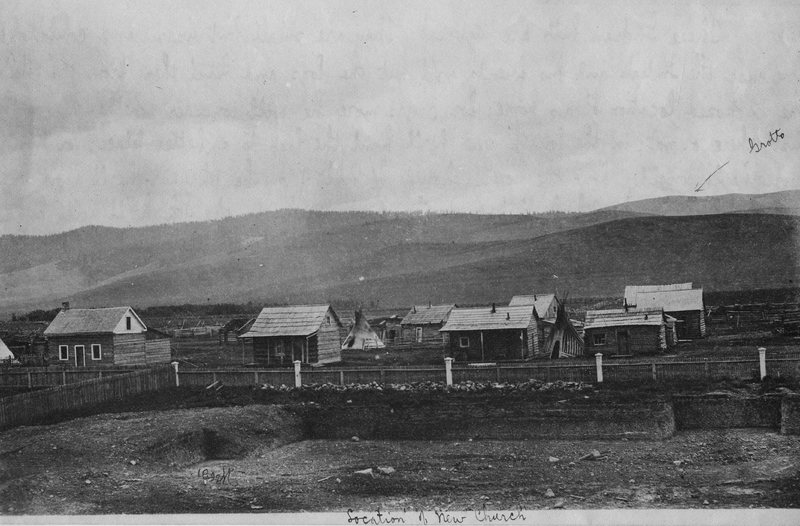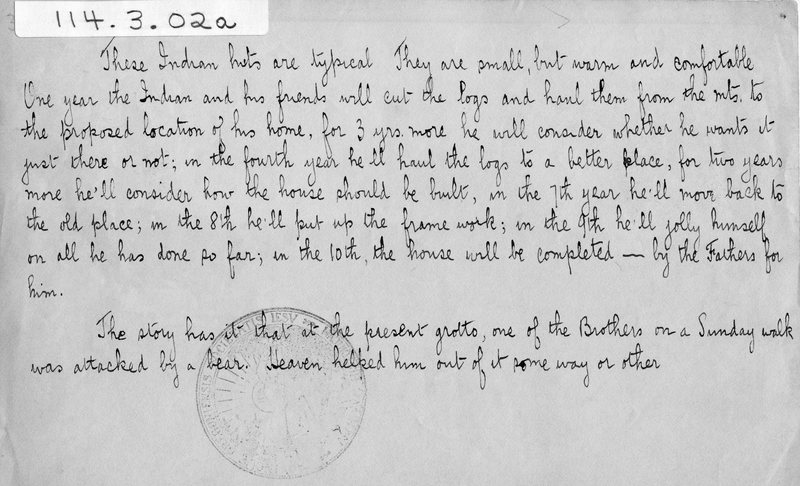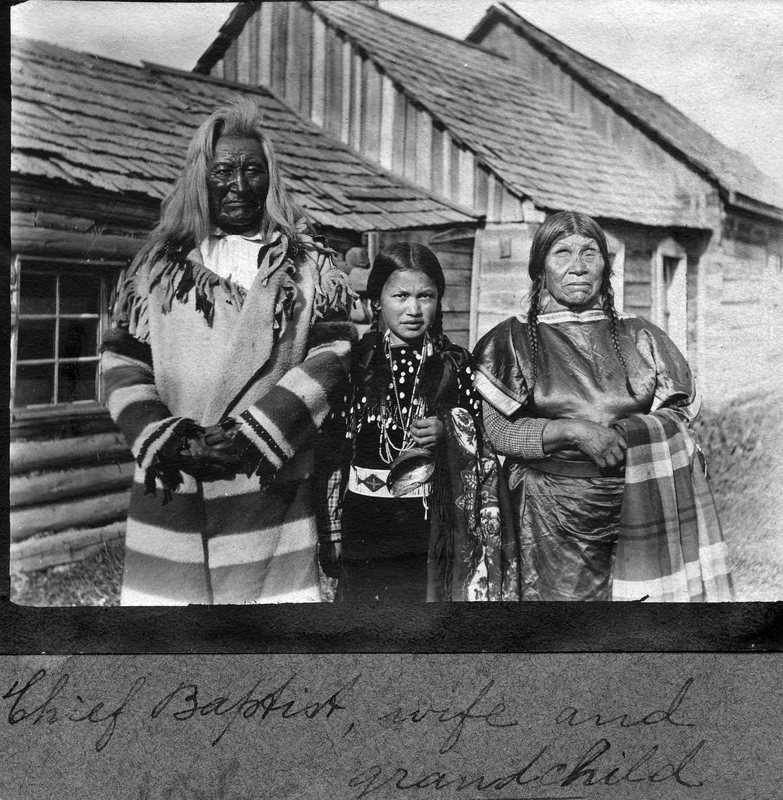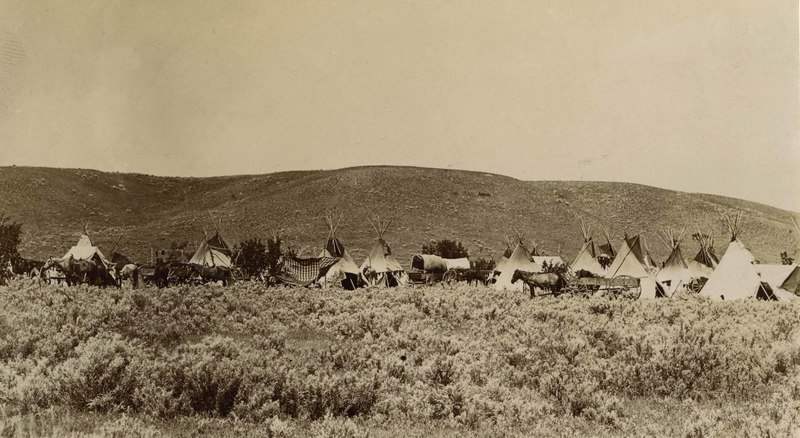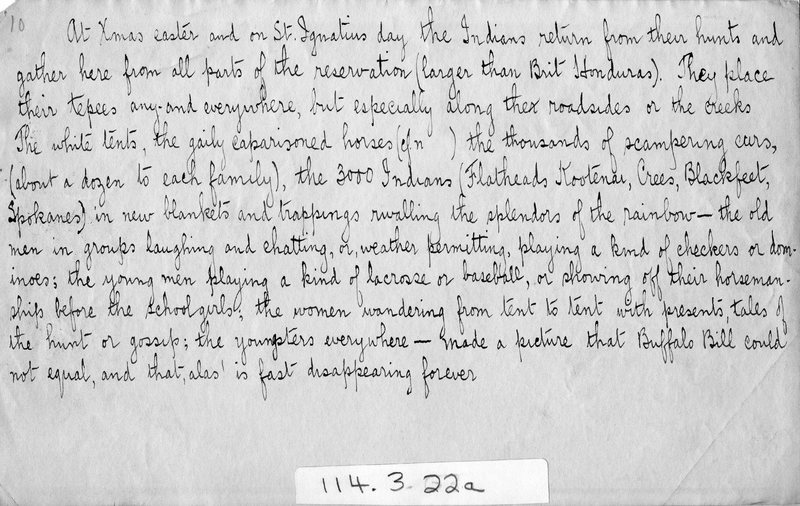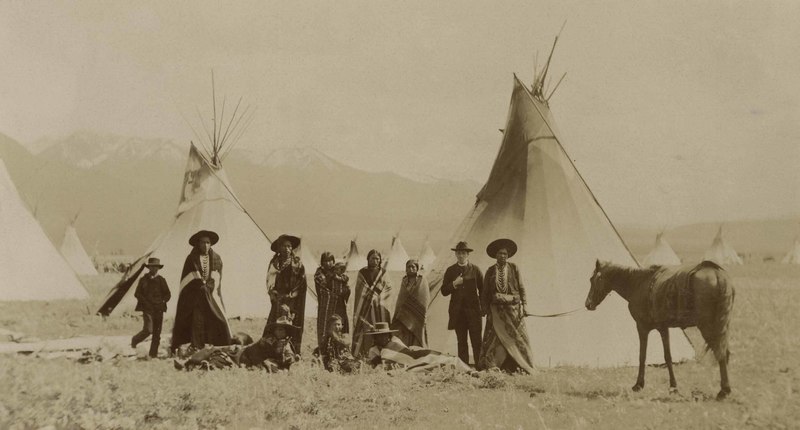Native American Housing
The text on the rear of this image reads,
“These Indian huts are typical. They are small, but warm and comfortable. One year the [Natives] and [their] friends will cut the logs and haul them from the mts. to the proposed location of his home, for 3 yrs. more he will consider whether he wants it just there or not; in the fourth year [they’ll] haul the logs to a better place, for two years more [they’ll] consider how the house should be built, in the 7th year [they’ll] move back to the old place; in the 8th [they’ll] put up the frame work; in the 9th [they’ll] jolly [themselves] on all [they] have done so far; in the 10th, the house will be completed— by the Fathers for him.”
This sort of rhetoric reveals the derogatory opinions many Jesuit Priests imposed onto the Native Americans who thrived on this land for generations. The Jesuits felt they were a more "civilized" peoples who often considered the Natives to be helpless. This stance problematizes the relationship between these two peoples and reveals how it was often a colonial relationship of manipulative power. It's also important to note that this exhibit will show the various buildings around the mission and there is always a stark difference in quality of buildings for Native Americans juxtaposed to buildings built for Jesuit missionaries.
Even the Chief of the local tribe was given lesser housing than the Jesuit missionaries were provided. Towards the end of the novel, Max Leon, a spaniard, expresses his disgust with the way the government and Jesuit missionaries provided materials for Native Americans:
"What about the Indians? What have they got? We killed off their game so they can't live in the old way. They don't know how to work. The governemnt gives them little money now and then but most of 'em were'nt taught how to buy food and goods when they come. What did we bring? Railroads, banks, and business?" (McNickle, 139).
McNickle provides us this insight from a settler to the reservation. He purposfully provides readers with various critical voices within the novel to help understand the varying experiences within the reservation. Even a Spaniard, one who was originally critical of Native traditions, understands the brutal treatment of the Native Americans who were forced onto the reservation and required to assimilate with mission life.
The Text reads,
"At Xmas, Easter, and on St. Ignatius day, the [Native Americans] return from their hunts and gather here from all parts of the reservation. They place their tepees any and everywhere, but especially along the roadsides or on the creeks. The white tents, the gaily caparisoned horses, the thousands of scampering cars, the 3000 [Native Americans] (Flatheads, Kootenai, Crees, Blackfeet, Spokanes) in new blankets and trappings revealing the splendors of the rainbow—the olden in groups laughing and chatting, or, weather permitting, playing a kind of checkers or dominoes; the young men playing a kind of lacrosse or baseball, or showing off their horsemaship before the schoolgirls; the women wandering from tent to tent with presents, tales of the hunt, or gossip; the youngsters everywhere— made a picture that Buffalo Bill could not equal, and that alas is fast disappearing forever."
For me, the inclusion of this photo was important because it adds a new element to the Novel that is not mentioned by D'Arcy McNickle. Native American peoples were able to take up useful space on the reservation and participate in their own celebrations that promote the longevity of Native cultures. It was a space where elders and youth could mingle and this presented the young Native children the opportunity to embrace a culture that was being pried away from them by federal boarding schools.

